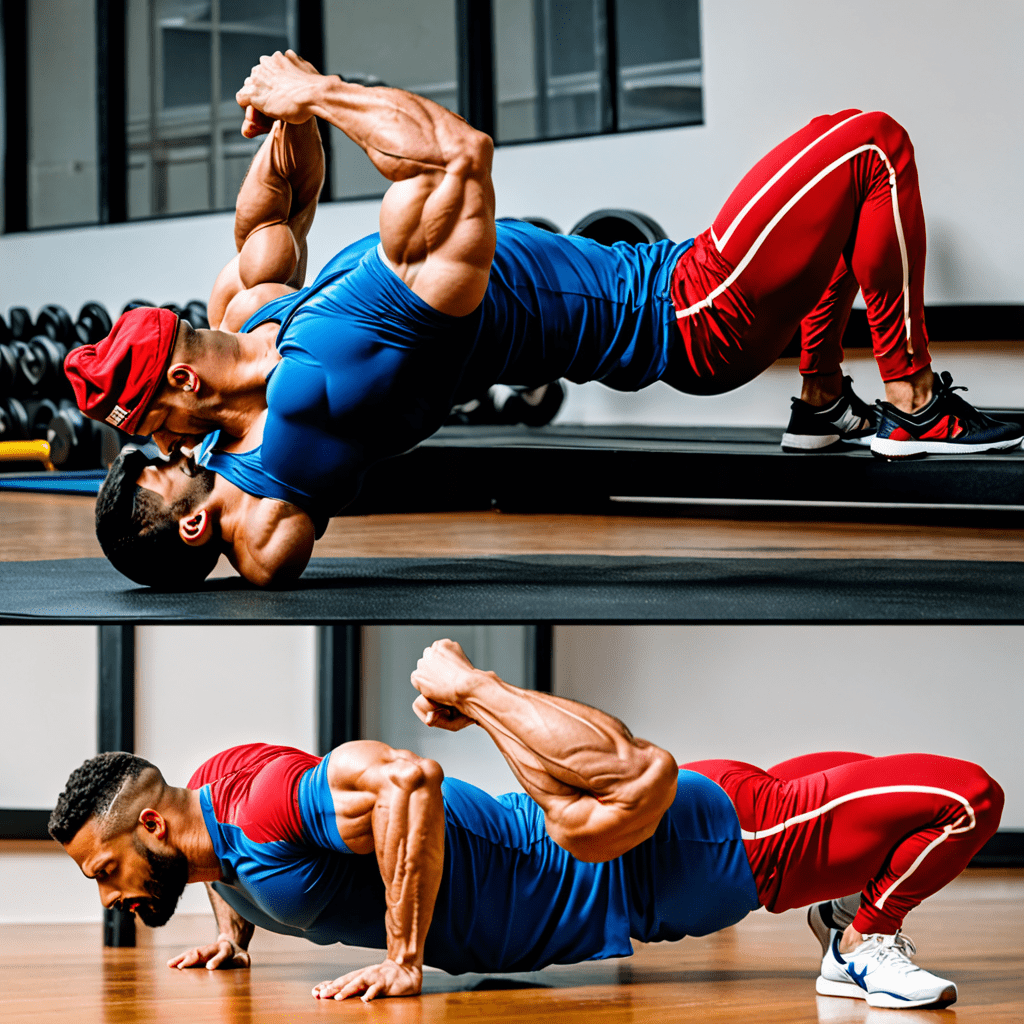
Ultimate Guide to Improving Your Push-Ups, Sit-Ups, and Pull-Ups Like a Pro
Are you looking to enhance your strength and endurance by mastering push-ups, sit-ups, and pull-ups? These classic bodyweight exercises offer incredible benefits when it comes to building muscle and improving overall fitness. Whether you’re a beginner or aiming to take your abilities to the next level, this ultimate guide will provide you with expert tips and techniques to help you achieve your fitness goals.
Understanding the Basics of Push-Ups, Sit-Ups, and Pull-Ups
Before delving into specific strategies for improvement, it’s crucial to understand the proper form and technique for each exercise. Proper form not only prevents injury but also ensures that you’re effectively targeting the intended muscle groups.
Mastering Push-Ups
Push-ups primarily target the chest, shoulders, and triceps. To perform a push-up with proper form, start in a plank position with your hands slightly wider than shoulder-width apart. Lower your body until your chest nearly touches the ground, then push back up to the starting position. Keep your core engaged and maintain a straight line from your head to your heels throughout the movement.
Perfecting Sit-Ups
Sit-ups engage the abdominal muscles, particularly the rectus abdominis. To execute a sit-up correctly, lie on your back with your knees bent and feet flat on the floor. Place your hands behind your head, engage your core, and lift your torso off the ground until you’re sitting upright. Slowly lower your upper body back to the starting position, ensuring that your lower back stays in contact with the floor.
Conquering Pull-Ups
Pull-ups are an excellent upper body exercise, targeting the back, shoulders, and arms. Begin by gripping an overhead bar with your hands slightly wider than shoulder-width apart. Engage your lats and biceps to pull your body upward until your chin clears the bar, then lower yourself back down with control.
Techniques for Improvement
Now that you have a solid foundation in the fundamental mechanics of push-ups, sit-ups, and pull-ups, it’s time to explore effective techniques for enhancing your performance and increasing the number of repetitions you can perform.
Progressive Overload
One of the most effective ways to improve at these exercises is to gradually increase the difficulty over time. For push-ups, you can start with incline push-ups and then progress to standard push-ups and eventually to more challenging variations like diamond push-ups. Similarly, for sit-ups, you can add resistance or elevate your feet to introduce more challenge. With pull-ups, you can use resistance bands or incorporate negatives to build strength.
Consistent Training Schedule
Consistency is key to improvement. Establish a regular training schedule that incorporates these exercises, ensuring that you allow adequate rest between sessions to allow for muscle recovery and growth. Aim for at least three dedicated training sessions per week, gradually increasing intensity and volume as your strength improves.
Proper Nutrition and Recovery
Fueling your body with the right nutrients and allowing for sufficient rest are essential components of progress. Ensure your diet provides an adequate amount of protein to support muscle repair and growth. Additionally, prioritize quality sleep to optimize recovery and maximize the benefits of your training efforts.
Challenges and Solutions
It’s common to encounter plateaus or obstacles when working on improving these exercises. Understanding how to overcome these challenges can significantly impact your progress.
Plateaus and How to Break Through Them
If you find yourself unable to increase the number of repetitions or progress to a more advanced variation, consider incorporating variations and modifications. For push-ups, kneeling push-ups can be a useful regression. For sit-ups, you can try incorporating weighted sit-ups. With pull-ups, using resistance bands or assisted pull-up machines can help you overcome sticking points.
Improper Form and Injury Prevention
Ensuring proper form is crucial to prevent injuries and maximize the effectiveness of these exercises. If you’re struggling with form, consider seeking guidance from a fitness professional or using mirrors for visual feedback. Additionally, incorporating mobility and flexibility exercises can help address imbalances and reduce the risk of injury.
Mental Barriers and Mindset
Don’t underestimate the influence of mindset on your performance. Visualizing yourself successfully completing these exercises and setting clear, achievable goals can have a profound impact on your progress. Stay consistent, stay positive, and celebrate each small victory along the way.
FAQ
What are the benefits of mastering push-ups, sit-ups, and pull-ups?
Mastering these bodyweight exercises can significantly improve overall strength, muscular endurance, and functional fitness. They also contribute to enhanced core stability and can be performed virtually anywhere, making them incredibly versatile and accessible.
How long does it take to see improvements in these exercises?
Improvement timelines can vary depending on individual fitness levels, consistency of training, and adherence to proper form and progression. With dedicated effort and a well-structured training plan, noticeable improvements can often be observed within a few weeks to a couple of months.
Can anyone perform these exercises, regardless of fitness level?
While these exercises can be challenging, modifications and progressions exist to accommodate individuals of varying fitness levels. Beginners can start with simplified versions and gradually progress as strength and proficiency increase.


